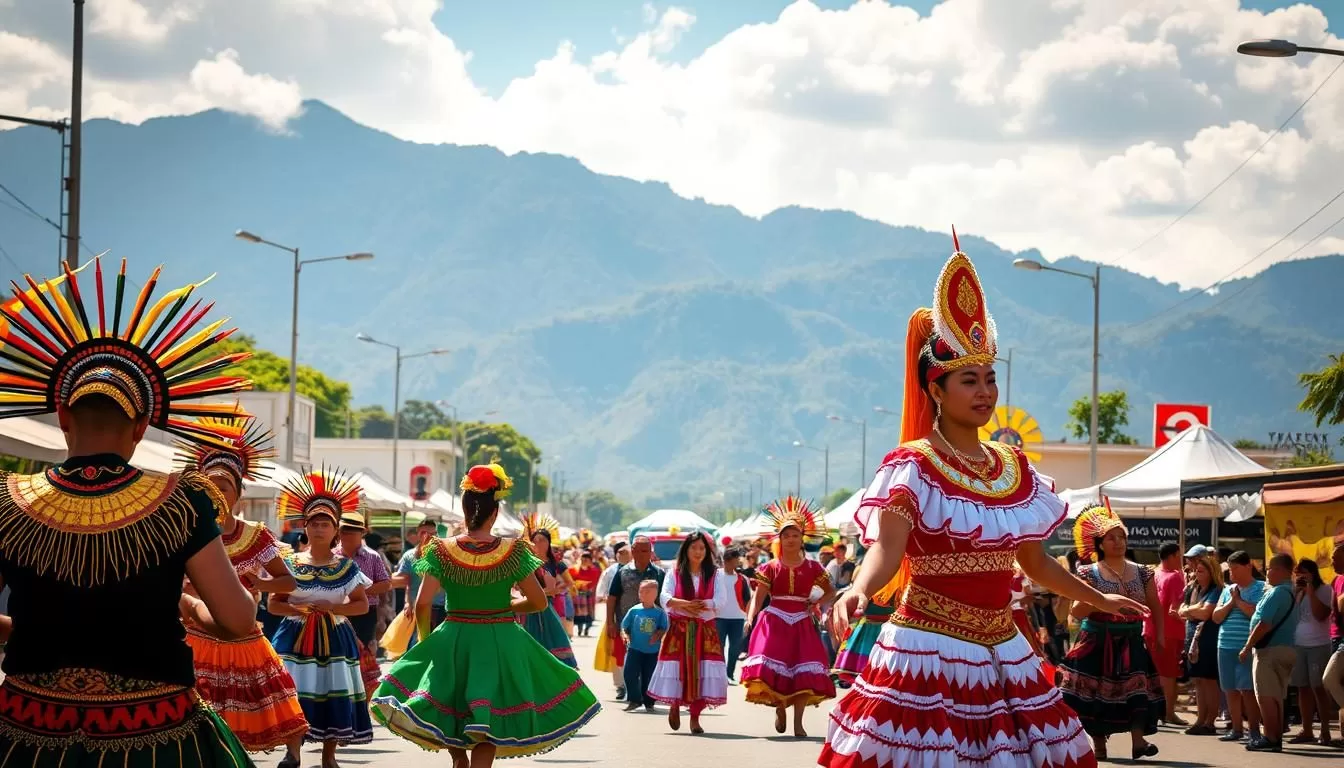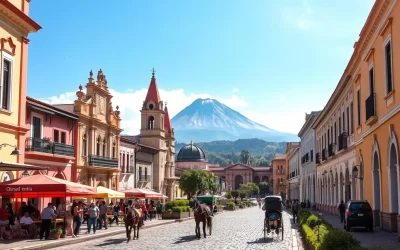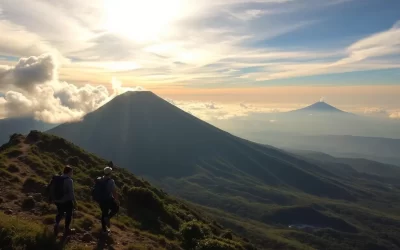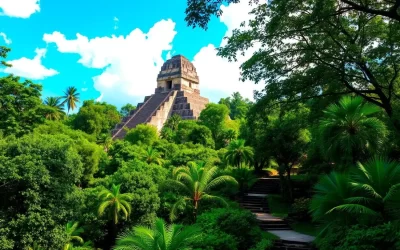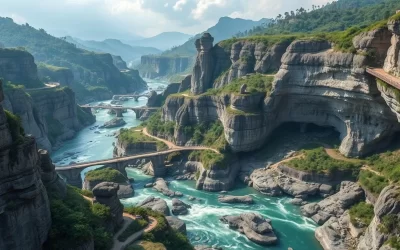Imagine immersing yourself in a country where vibrant traditions and celebrations are an integral part of the cultural heritage. Guatemalans have a special talent for public festivities, blending indigenous Maya traditions with Catholic influences to create unique experiences.
When you visit this beautiful country, timing your trip around its festivals can provide an authentic glimpse into its soul and culture. From elaborate Holy Week processions to spectacular festivals, these events showcase the artistic talents, spiritual devotion, and community spirit of the people.
Each region has its own distinctive festivals, reflecting the diverse cultural identity of its various ethnic communities. By understanding the significance behind these celebrations, you can enrich your travel experience and gain a deeper appreciation for the country‘s complex cultural identity.
The Cultural Significance of Guatemalan Festivals
The rich cultural tapestry of Guatemala is beautifully showcased through its numerous festivals and celebrations. These events are not just entertaining spectacles but are deeply rooted in the country’s history and traditions.
Blend of Maya and Catholic Traditions
Guatemalan festivals represent a fascinating syncretism where ancient Maya cosmology blends with Catholic traditions, creating celebrations that honor both indigenous heritage and Spanish colonial influences. This blend is evident in the way villagers dress in their colorful traditional costumes and unite to celebrate the town’s patron saint through rituals, dances, and processions.
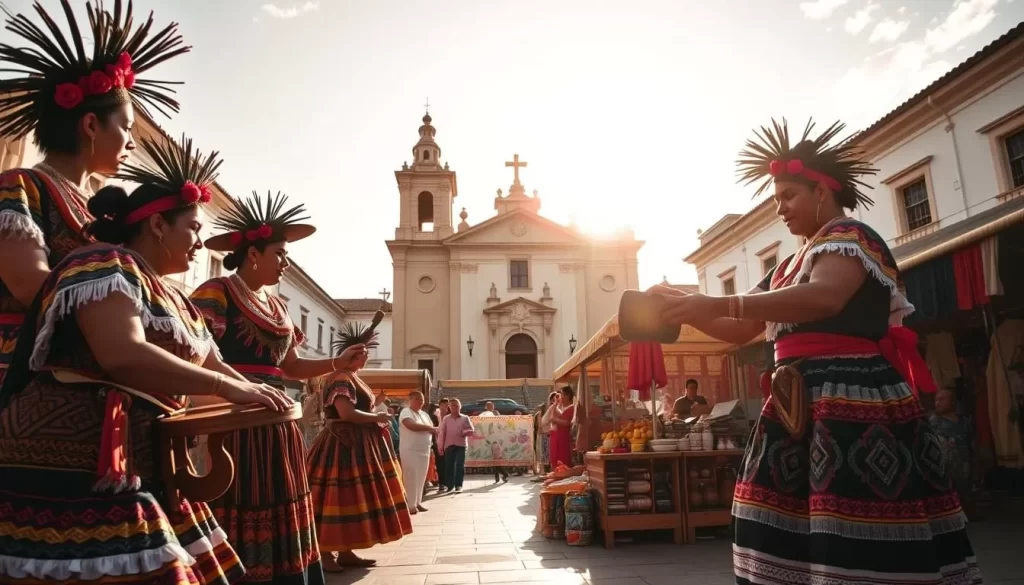
Role of Cofradias in Festival Organization
The cofradias, or religious brotherhoods, play a crucial role in preserving and organizing these traditions. Members take on significant financial and time commitments to ensure festivals continue as they have for centuries. Their dedication is a testament to the importance of these celebrations in Guatemalan life and tradition.
What Makes Guatemalan Celebrations Unique
What makes Guatemalan celebrations truly unique is how they serve as living museums of cultural practices. Traditional costumes specific to each region are worn with pride during festivities, reflecting the artistic traditions passed down through generations. These festivals aren’t just tourist attractions but vital expressions of community identity and a way of life that connects present-day Guatemalans with their ancestors.
| Festival Element | Cultural Significance | Reflection of Heritage |
|---|---|---|
| Traditional Costumes | Regional identity and pride | Artistic traditions passed down through generations |
| Rituals and Processions | Blend of Maya and Catholic traditions | Honoring patron saints and indigenous heritage |
| Music and Dance | Expression of community identity | Preservation of cultural practices |
Understanding the deeper meaning behind these festival elements will give you insight into the complex worldview of Guatemala’s indigenous people. By experiencing these festivals and traditions, you’ll gain a deeper appreciation for the country’s rich cultural heritage and the significance of these celebrations in the daily life of Guatemalans.
Spring Celebrations: Holy Week and Beyond
As spring arrives in Guatemala, the country comes alive with vibrant festivals that showcase its rich cultural heritage. This season is particularly special, with various events taking place across the country, each offering a unique glimpse into Guatemalan traditions.
Carnival (February)
The spring festivities begin with Carnival in February, a family-friendly celebration that takes place in the week leading up to Lent. Unlike its more exuberant counterparts in other countries, Guatemala’s Carnival is a more subdued affair, with notable events in Retalhuleu and Livingston.
Semana Santa in Antigua (March/April)
One of Guatemala’s most significant festivals is Semana Santa, or Holy Week, in Antigua. This week-long observance is renowned for its elaborate processions and stunning alfombras that adorn the streets.
Alfombras: The Colorful Sawdust Carpets
The alfombras, made from colored sawdust, pine needles, and flower petals, are a hallmark of Semana Santa in Antigua. These intricate designs are created overnight, only to be walked over by processions the next day.
Processions and Pageantry
The processions during Holy Week are a sight to behold, featuring massive wooden floats carried by purple-robed participants. These solemn events are a testament to the deep religious devotion of the Guatemalan people.
Jueves de Ascencion at Lake Chicabal (May)
For a more intimate and spiritual experience, consider visiting Lake Chicabal for Jueves de Ascencion in May. This sacred celebration is a unique opportunity to witness traditional Maya rituals in a breathtaking setting.
These spring events showcase the rich tradition and cultural diversity of Guatemala, making it an ideal time to visit this beautiful country. Whether you’re attending Semana Santa or Jueves de Ascencion, you’re sure to experience the warmth and hospitality of the Guatemalan people in a unique and unforgettable place.
Summer Festivities: Music, Dance and National Pride
Summer in Guatemala is a time of fervent festivities, showcasing the country’s deep-rooted cultural practices and national identity. You can experience the vibrant culture of Guatemala through its various summer festivals.
Fiesta de Santiago in Antigua
On July 25th, Antigua transforms into a carnival atmosphere with the Fiesta de Santiago, honoring Saint James. You can enjoy traditional music and folkloric dancing, along with processions and family-friendly activities that showcase the town’s rich cultural heritage.
National Folkloric Festival in Coban
Just two days later, Coban hosts the National Folkloric Festival (Rabin Ajau), where indigenous groups from across Guatemala gather to perform traditional dances and ancestral music. The highlight is the selection of the Rabin Ajau, a cultural pageant celebrating Maya values and traditions.
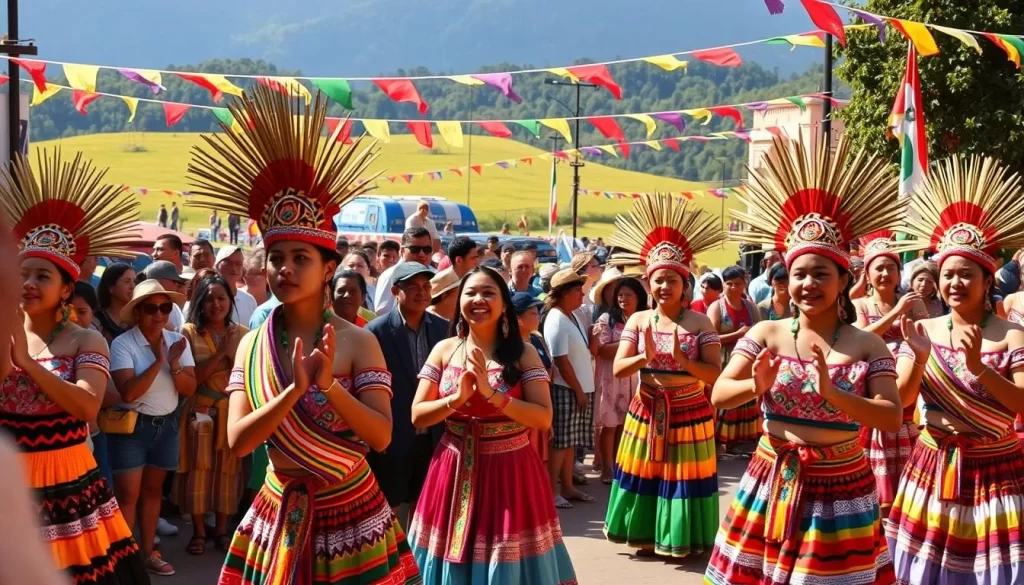
Fiesta de la Virgen de la Asunción
August 15th marks the Fiesta de la Virgen de la Asunción, honoring the patron saint of Guatemala City. You can witness elaborate parades, religious processions, and community gatherings throughout the country, with the largest celebration in Guatemala City.
Independence Day Celebrations
The summer festival season culminates with Independence Day on September 15th, commemorating Guatemala’s peaceful independence from Spain. You can experience patriotic events, military parades, and marimba music, showcasing national pride through formal ceremonies and joyous street parties.
These summer festivals offer a unique opportunity to witness how Guatemalans balance their indigenous heritage, colonial history, and modern national identity through music, dance, and community celebration.
Guatemala: Top Festivals to Check Out When Visiting in Fall
Guatemala’s fall season is a kaleidoscope of colors and traditions, with the Day of the Dead being a highlight. This period is marked by vibrant festivities that honor the country’s rich cultural heritage.
Day of the Dead Celebrations (November 1st)
The Day of the Dead, or Día de los Muertos, is a significant celebration in Guatemala, taking place on November 1st and 2nd. It’s a time when families come together to honor their deceased loved ones.
Giant Kite Festival in Santiago Sacatepéquez
In Santiago Sacatepéquez, the Day of the Dead is celebrated with the flying of giant kites, some reaching up to 45 feet in diameter. These barriletes gigantes are not only breathtaking but also symbolize a connection between the living and the dead.
Cemetery Celebrations and Family Traditions
Families gather in cemeteries to clean and decorate graves with marigolds and other flowers. They share meals and even play music, creating a joyful atmosphere. Traditional dishes like Fiambre, a cold cut mixture with eggs, salad, and vegetables, are prepared and enjoyed during this time.
Todos Santos Cuchumatan Horse Race
In the town of Todos Santos Cuchumatan, the Day of the Dead celebrations include a spectacular horse race known as Skatch Koyl. Riders in traditional costumes race while intoxicated, making it a unique and thrilling tradition.
| Festival | Location | Date |
|---|---|---|
| Day of the Dead | Throughout Guatemala | November 1st & 2nd |
| Giant Kite Festival | Santiago Sacatepéquez | November 1st |
| Todos Santos Cuchumatan Horse Race | Todos Santos Cuchumatan | November 1st |
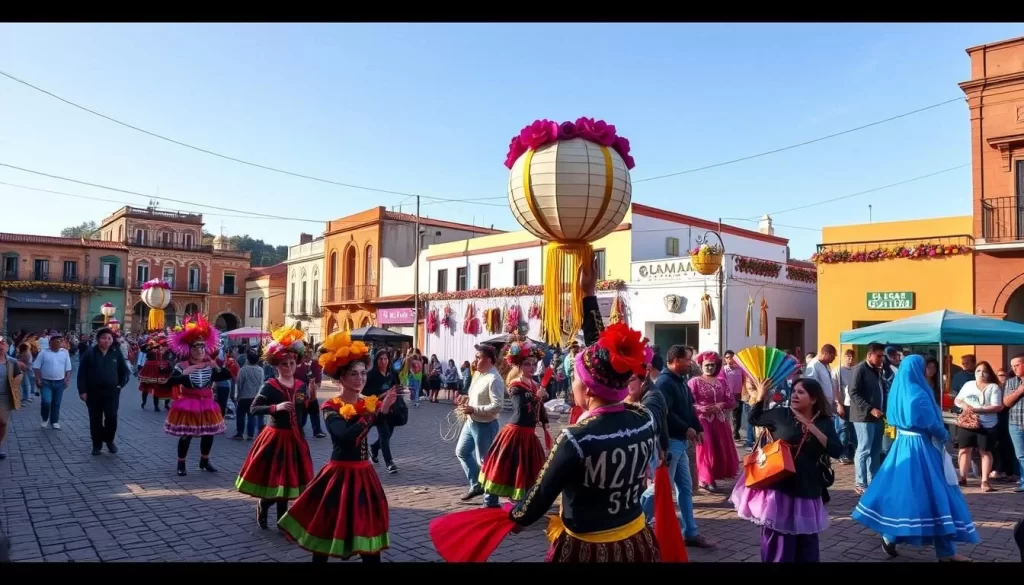
Winter Celebrations: End-of-Year Traditions
As the year draws to a close, Guatemala bursts into a kaleidoscope of colors and sounds, celebrating the season with fervor. The country’s winter celebrations are a testament to its rich cultural heritage, blending traditional practices with modern festivities.
Fiesta de Santo Tomas in Chichicastenango
The town fair of Chichicastenango, held from December 14th to 21st, is one of the most significant winter celebrations in Guatemala. This event is a perfect blend of Catholic and Maya traditions, featuring the spectacular Palo Volador (Flying Pole Dance), where young men climb a 100-foot pole and spin back to earth on ropes, symbolizing the connection between earth and sky in Maya cosmology.
The Palo Volador Tradition
The Palo Volador is a thrilling spectacle that showcases the bravery and agility of the participants. This tradition is deeply rooted in Maya culture and is an integral part of the Fiesta de Santo Tomas.
Christmas Posadas and Nativity Scenes
December in Guatemala also features posadas, evening processions that reenact Mary and Joseph’s search for lodging. Participants carry candles and sing traditional songs as they move from house to house during the nine days before Christmas. The elaborate nativity scenes displayed in homes, churches, and public spaces are a highlight of the season, often featuring landscapes that incorporate Guatemala’s volcanoes, lakes, and traditional village scenes.
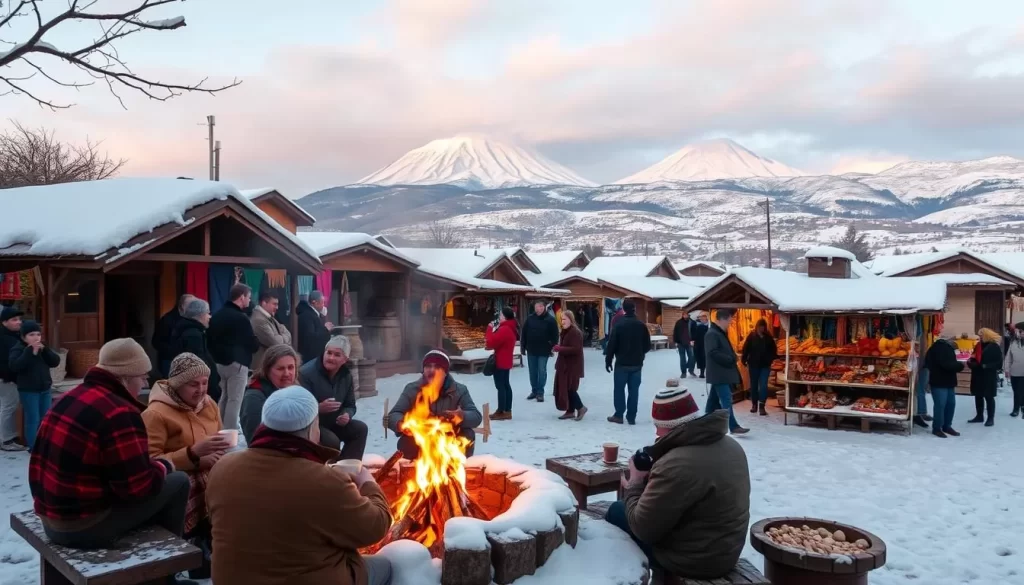
New Year’s Eve Celebrations
New Year’s Eve in Guatemala is a spectacular affair, with fireworks lighting up the sky across the country. Traditional music plays in town squares, and families gather to celebrate with special meals and customs meant to bring good fortune.
The Toritos Tradition
One of the most unique New Year’s traditions is the toritos (little bulls), where brave participants wear metal frames covered with fireworks and run through crowds, creating a thrilling spectacle.
Antigua’s Clock Tower Countdown
If you’re in Antigua for New Year’s Eve, join the crowds gathering at the iconic Santa Catalina Arch to count down to midnight. The celebration continues into the early morning with music, dancing, and a festive atmosphere in this colonial UNESCO World Heritage city.
- Experience the vibrant culture of Guatemala through its winter celebrations.
- Witness the spectacular Palo Volador tradition in Chichicastenango.
- Enjoy the festive atmosphere and traditional music during New Year’s Eve celebrations.
Tips for Experiencing Guatemalan Festivals
As you prepare to experience the vibrant festivals of Guatemala, keep in mind these essential tips to make the most of your cultural journey. To truly appreciate the traditions and celebrations, plan ahead, especially for major events like Semana Santa or Day of the Dead.
Pack comfortable clothing and shoes, and be respectful of local customs. Learning basic Spanish phrases will also enhance your experience. Consider hiring a local guide to gain deeper insights into the heritage and tradition behind the festivals.
By being mindful of your surroundings, respecting photography restrictions, and supporting local economies, you can enjoy the festivals in a meaningful way and at the right time.
The above is subject to change.
Check back often to TRAVEL.COM for the latest travel tips and deals.
Here are some Tours & Sightseeing suggestions that might pique your interests!
